L.M. Macievich. Aviator, who invented the aircraft carrier
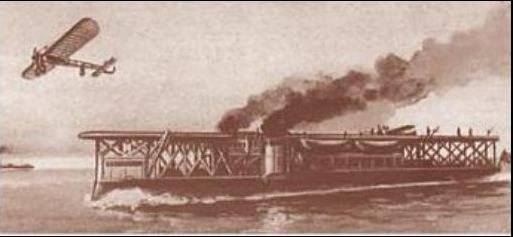
In the late 30s, none of the strategists and politicians had a clear idea of what role an aircraft carrier could play in a naval war. This class of ships was considered only as a useful addition to linear forces, as a means of providing fleet aerial reconnaissance, preliminary weakening of ship groupings and delivering strikes on coastal targets of the enemy - in order to further defeat them with artillery of battleships and cruisers. At that time, it was believed that aircraft carriers could not act independently, since they were not able to protect themselves from surface ships, submarines and aviation the adversary.
The first impetus to clarify the combat capabilities of the aircraft carrier was the raid of the British naval aviation to the main base of the Italians Taranto 11 November 1940 of the year. The next, more significant, was the Pearl Harbor 7 December 1941 of the year. After these two dramas, aircraft carriers became a striking force on the seas.
Increased and interest in their stories. But who first thought about the aircraft carrier? Americans believe that the championship belongs to them. In the United States, the World newspaper in 1910 offered to set up aircraft for take-off sites on ships. In England, we are confident that the first was Admiral McCherr, who in 1911, submitted to the Admiralty a project of an aircraft carrier. In France, they start counting from the 1912 of the year when the La Fudr mine transport was converted into the first aircraft carrier.
Well, we in Russia have archival and literary sources indicating that our compatriot, the captain of the corps of mechanical engineers Lev Makarovich Macievich - in 1909 year, correctly estimated the interaction of the ship and the aircraft first.
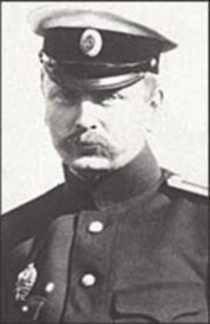 “You have little chance of success,” said Colonel Krylov, who performs the affairs of the Marine Technical Committee, to Macievich. - "However, I will try to ask for help from Prince Golitsyn." Left alone, the colonel wrote in the calendar "Business": "Report on the proposal cap. Makievich Assistant Minister of the Navy. " Then another: "To talk with Professor Boklevsky." The professor was not only interested in aviation, but also had great connections.
“You have little chance of success,” said Colonel Krylov, who performs the affairs of the Marine Technical Committee, to Macievich. - "However, I will try to ask for help from Prince Golitsyn." Left alone, the colonel wrote in the calendar "Business": "Report on the proposal cap. Makievich Assistant Minister of the Navy. " Then another: "To talk with Professor Boklevsky." The professor was not only interested in aviation, but also had great connections.Colonel Alexei Nikolaevich Krylov, the future academician, knew who had what opportunities, and knew about the attitude of the naval authorities, up to the highest one, to aviation that had appeared abroad. The attitude is very skeptical. This was facilitated by the report of our naval attache in France, who shared the point of view of the local admirals: "About the airplanes," wrote the attache, "there is nothing to say, they will not see the sea soon ... in the near future this device will not be able to conquer the air above the sea" .
L.M. Matsievich, the author of the armored cruiser project and fourteen submarine projects, became interested in the “air” in 1907, when he brought a close acquaintance with the workmate, Second Lieutenant BM. Zhuravlevym. The second lieutenant offered to equip cruisers with aerostats to increase the range of the horizon. Zhuravlev did not succeed in implementing this idea, but his article in the magazine “Russian Shipping” promoted many sailors to the sky. Including Macievich.
In a memorandum submitted to the Maritime Office 23 of October 1909 of the year, Macievich predicted the future of naval and naval aviation. “The qualities of airplanes,” he wrote, “make it possible to think about the possibility of applying them to the maritime industry. When placing one or several airplanes on the deck of a ship, they can serve as reconnaissance aircraft, as well as to establish communication between individual squadron ships and for communication with the coast. In addition, a special type of reconnaissance ship equipped with a large number of airplanes (up to 25) is possible. The technical side of creating sea type airplanes (having the ability to get on the water, while maintaining the necessary buoyancy and stability), as well as the possibility of placing them on the deck of warships, do not seem to present insurmountable difficulties and are already being developed by me. It is not difficult to arrange special platforms in the bow and in the stern of the vessel, on which airplanes would be placed and from which they would rise. Airplanes would be raised from a ship’s course or through specially adapted rails. ”
That is, the proposed aircraft carrier, seaplane and catapult to launch it.
This note, like the second filed soon, did not take action. According to the second chief of the main naval staff, Vice-Admiral N.M. Yakovlev appointed a commission. She recognized the project as worthy of attention, but did not consider it possible to finance it from the treasury. And all the other attempts to stir up the command resulted only in the creation of commissions, consideration, resolution. The case is well-known, for Russia it is very characteristic both in those times and now.
However, Matsievich was lucky: about one of his reports and, accordingly, about the resolution on this report became known (not without the assistance of Colonel A.N. Krylov) the king's brother-in-law, Grand Duke Alexander Mikhailovich, a member of the committee on strengthening the fleet on voluntary donations. And someone advised the prince of the donations, 900 thousand rubles, to give to the development of aviation business in Russia. Having grasped the favor of such an important person, Golitsyn, Krylov and Boklevsky conducted relevant work with other members of the committee in order to create the necessary number of votes. To some extent they succeeded.
Then, December 13 1909, in the Academy of Sciences in St. Petersburg held a closed meeting of members of the Council of Ministers, representatives of the State Council and some figures of the State Duma. On it with a report "On general guidelines for the proper formulation of the case of aeronautics in Russia" was made by academician, admiral B. B. Golitsyn. He criticized the inactivity of the military, maritime and interior ministry. Bb Golitsyn suggested that the state should take control of the development of aviation business in Russia. It should, of course ... However, practically the academician again proposed to organize a commission, however, this time a special, interdepartmental one, from representatives of the State Council, the State Duma, interested ministries, higher educational institutions, and also public organizations and associations.
And again the result was familiar both in the past and in the present. The Council of Ministers approved the admiral’s proposal, but two days later an addition was introduced in the protocol, bringing the approval to zero: “Improving ways of movement in airspace and practical testing of new inventions should be the subject of private initiative.”
In December, Captain Matsievich entered the grand-ducal committee. 12 January 1910 of the year, the committee appealed to the donors to speak out, what to use for 900 thousand rubles. Decided: on domestic aeronautics. On January 30, an air fleet division was created under the committee. In March, eight officers and seven lower ranks were seconded to France, the aviation thought center of that time, at the expense of the committee, for training in flight and maintenance of equipment. At the same time they decided to order in France eleven airplanes of different systems. Captain Macievich was appointed chairman of the selection committee.
In Paris, on the Grand Boulevards, at the Brabant Hotel, a kind of headquarters of Russian aviators, Matsievich told the pilot Efimov that although there is no aircraft in Russia yet, there is already a rule that every time you take off and land the aircraft the cops. In addition, for any flight you need to have a separate permit from the police. In the Duma, a deputy from left-wing Maklakov came out against this and received a truly amazing answer: “Before you teach the average people to fly, you must teach the police how to fly!”
From France, Matsievich wrote: “I fly on Farman, I can on Sommer, upon arrival in Sevastopol I will begin to study at Bleriot, I will thoroughly study the shortcomings of existing airplanes, and then I will design new airplanes”.
Flight LM Macievich.
He returned to St. Petersburg on September 3, immediately went to the next committee meeting. The project of creating an aviation school in Sevastopol was discussed. Matsievich was appointed there as the head of the workshops, allocated him 15000 rubles for the construction of an airplane of his design and an old military vessel for the production of experiments. Colonel Krylov was the first to congratulate him on his new appointment: “Here, sir, my first victory is evident! God knows, your business has gotten off the ground. ”
However, fate decreed otherwise. Before leaving for Sevastopol, the captain decided to take part in the First All-Russian Ballooning Festival held with great triumph. He flew in front of hundreds of thousands of spectators at Farman, set a record for flight duration (44 minutes 12,2 seconds), won the prize for landing accuracy. Matsievich rolled passengers, including Professor Boklevsky, Chairman of the Council of Ministers Stolypin (this was a special protocol) and Vice Admiral Yakovlev, the one who once tried to drown the captain’s idea of equipping ships with ships. Pleased with the flight, the admiral said goodbye: “It looks like airplanes can indeed be useful to the fleet. There will be suggestions on this part - write a report, we will consider and try to help. ”
The first all-Russian festival of aeronautics. A group of aviators at the airplane. In the center M.N. Efimov, 1-th from the left LM Macievich
24 September, the evening mechanic Macievich non-commissioned officer Alexander Zhukov, who traveled with the captain to France, noticed signs of fatigue on the face of the pilot. When Matsievich started the engine, the clock showed 5 hours 33 minutes past noon. At exactly six o'clock a cannon shot rang out announcing the end of official flights that day, but the public did not disperse, watching the flight of one of their favorites. “Farman” was at the height of 480 meters, when the audience heard an incomprehensible crackling in the air. The airplane swayed uncertainly, nodded, rushed down. Then he leveled off for a moment and immediately began to break apart. The pilot, ahead of the wreckage, fell to the ground.
Macievich on "Farman"
Spectators rushed to the crash site. Captain Matsievich lay prone, throwing his right hand aside and bending his left under him. Like the last time I wanted to turn my face to the sky. The next day, the commission established the cause of the death of the pilot. In flight, one of the wire stretch marks broke in front of the motor, hit the propeller, tightened and forced the other breaks to burst. The rigidity of the system was broken, the airplane began to deform. When trying to straighten a falling car, Matsievich tore off the seat and dropped out of an airplane.
Lev Makarovich Macievich became the first victim of Russian aviation, tens of thousands of people escorted him to the cemetery. One of the mourners, a high-school student, recalled many years later: “I raised my entire class, we raised money for a wreath, went to Emil Tsindel, under Passage, to buy it. The wreath was laid on the coffin still visible from the pile of flowers in the Spiridonia Maritime Church in the Admiralty. The girls cried, I, although it was difficult for me, fastened. But then my mother, seeing it should be that it was still very difficult for me, took and led me to either a meeting, or a matinee in memory of the deceased hero. Everything would have been nothing, and I probably would have decorously sat and talk, and obituaries, and music. But the organizers had the idea to start the ceremonial civil funeral service from the funeral march, and instead of the usual, familiar to me, so to say familiar Chopin's march, the musicians suddenly brought down the powerful, proud and endlessly tragic introductory chords of Beethoven’s “Marcha Funre”. And so I could not stand it. They took me home. ”
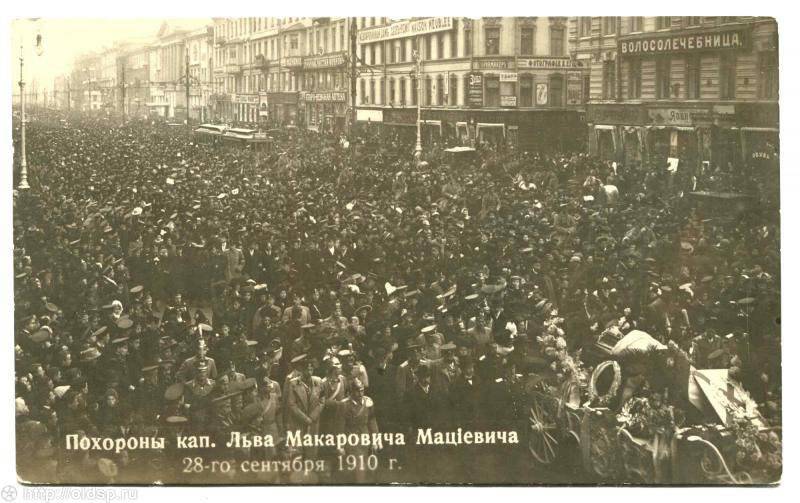
The death of Captain Macievich forced experts to think about flight safety. The fleet newspaper Kronstadt Vestnik of 26 of September wrote: “How many people could have witnessed the flight so that at the time of the fall of the airplane Matsievich would break ... the parachute and descend on the Commandant field alive and unharmed while its damaged Farman would turn in the air and fly to the ground like a stone ... Be such a parachute, or something like that in Macievich - 90% for the fact that a decisive and brave aviator would stay alive for the benefit of Russia. ”
The twist of fate: at the celebration, the aeronauter Drevnitsky successfully performed a parachute jump. Unfortunately, with such a parachute it was impossible to jump from an airplane. The parachute for the rescue of the pilot was invented only one year later by one of the eyewitnesses to the death of Macievich Gleb Kotelnikov.
At the Komendantsky airfield, a marble slab with the inscription was laid: “In this place, the victim of 24's debt of September 1910 fell, taking a flight on the Farman airplane of the Fleet Engineers Captain Lev Makarovich Maciwicz. This monument was erected by the Highest Established Special Committee for Strengthening the Military Fleet on Voluntary Donations, of which the deceased was a member. ”
Использованная литература:
1. Grigoriev A. Albatrossy: From the history of hydroaviation. M .: Mashinostroenie, 1989. C. 17-18.
2. Grigoriev A. “I did not know the discord between dream, word and deed”. // Inventor and innovator. - 1989. - №10. C. 26-27.
3. Assumption L. Man flies. // Around the world. - 1969. - №5. C. 66 — 70.
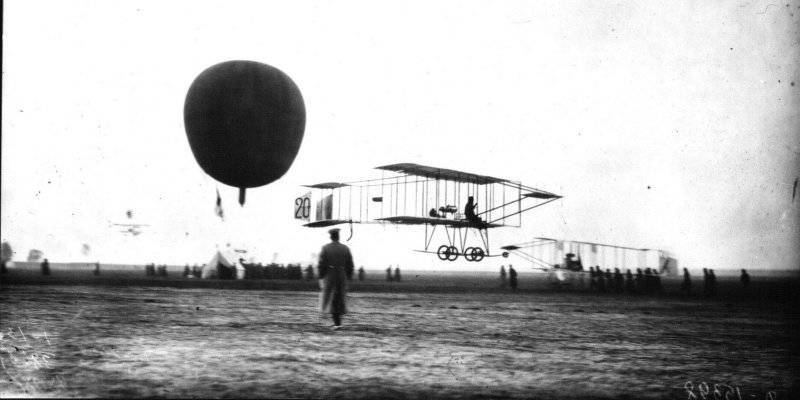
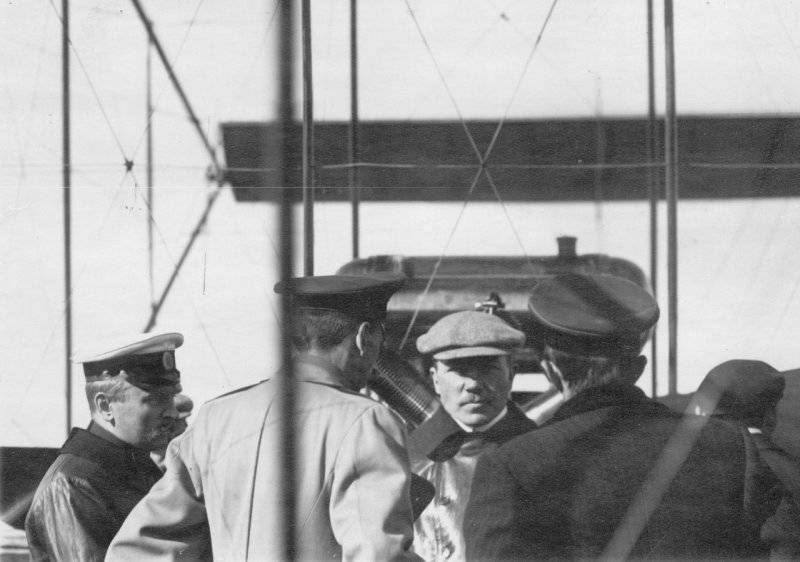
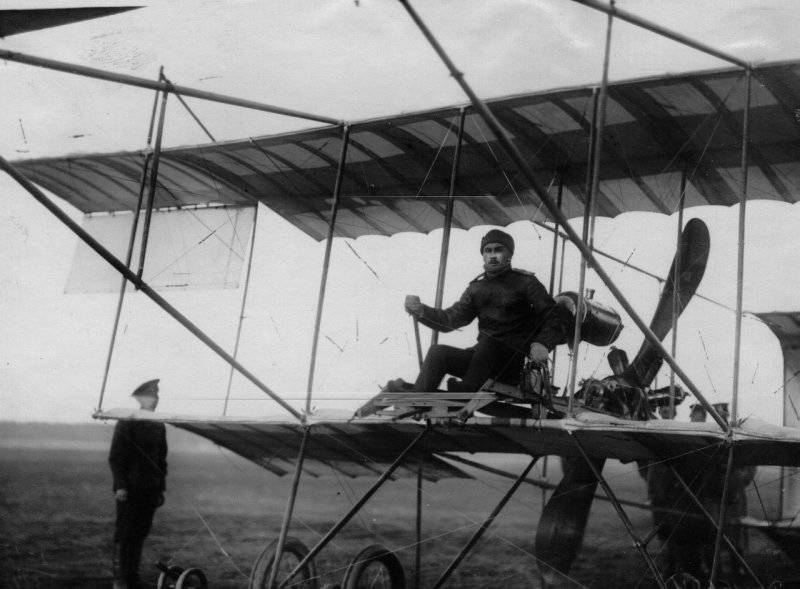
Information